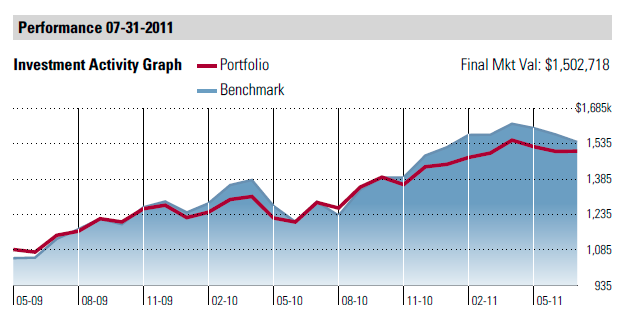Charts Why Investors Should Consider US Bonds In 2014
Post on: 25 Май, 2015 No Comment

US Treasuries and corporate bonds may still be attractive investments, even as the Federal Reserve attempts to tighten monetary policy. Fed Chair Janet Yellen said during the committee’s policy decision last week that she believed stimulus would be phased out by this fall. Although her comments came off as bearish for US bonds, support levels remain strong under major benchmark indices for the asset.
Yellen commented that while the stimulus program would be over by the fall, the committee would likely wait a considerable time after ending its asset purchase program before pushing borrowing costs higher. The vague definition of the word considerable slightly tripped her up when she was pressed further on the topic, hesitatingly responding, I — I, you know, this is the kind of term it’s hard to define, but, you know, it probably means something on the order of around six months or that type of thing.
Investors realized in the days after Yellen’s conference that Fed policy was very much on the same course as it has been the past few months, and a true rate change would probably be unlikely for another year or more. This put support under the Treasury market that had been heavily sold off since last May and is only now starting to form a price bottom in the new year.
Alongside monetary policy, Treasuries and corporate bonds have attracted funds away from cautious equity investors. Bonds tend to increase in value as stocks decline, creating a sort of binary trade relationship. With physical demand for metals falling in emerging markets, one of the only assets to turn to during times of fear are US bonds.
Strong-performing sector ETFs such as the Technology SPDR ETF (NYSEARCA:XLK ) and the iShares NASDAQ Biotechnology Index (NASDAQ:IBB ) have begun to lose interest among investors, posting heavy price declines the past few days. The S&P 500 (INDEXSP:.INX) is having a difficult time moving through its existing highs around 1,880, which makes getting overly long in stocks a risky bet. Although a flow of funds from equities to bonds does not guarantee a correction among US stock indices, it does deserve some attention.
The chart below is of the iShares IBoxx $ Invest Grade Corp Bond Fund (NYSEARCA:LQD ). Investment-grade bonds have been popular since the fall of 2013 due to investors’ ever-present search for yield. The Fed was hesitant to begin cutting stimulus until its December meeting, and by that time the US economy was starting to pick up steam. The bond index offers a better yield than government bonds, and with a stronger US backdrop this year, it is likely investor confidence will remain high in the sector.
A healthier US economy has also come alongside geopolitical concerns overseas. Ukraine announced its evacuation of troops from Crimea on Monday night, essentially conceding power to Russian forces. Few US companies have major exposure to the region, yet investors are still concerned about the potential economic fallout that could arise from escalating tension in the region between NATO countries and Russia. The threat of a World War III-type event taking place has subsided from a few weeks ago, but the constant risk that Russian President Vladimir Putin could doing something very irrational leaves buying support under safe-haven asset iShares Barclays 20+ Yr Treasury Bond (NYSEARCA:TLT ).
US bonds remain attractive, even as interest rates are expected to rise over the intermediate future. The potential correction in equity markets and lack of foreseeable inflation concerns in the US economy signal that bonds may be a quality investment in 2014.














